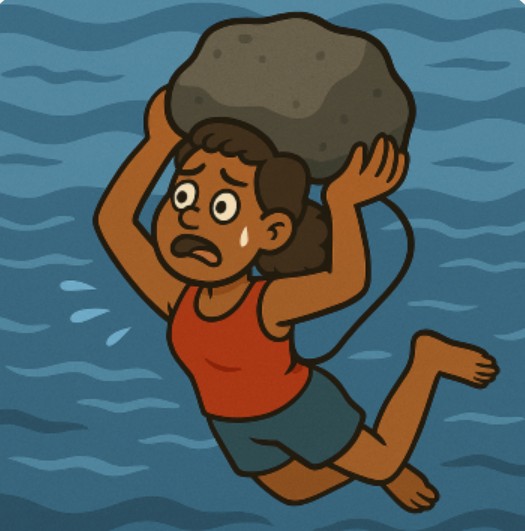- 10 August 2025
- 2549 views
Search

🌿 Step 6: A Doorway, Not a Destination
In my last blog, I shared how Step 6 asks us to be entirely ready to let go—even if we’re not fully willing yet. When willingness is absent, we ask for it, but we don’t linger. This step is meant to be a doorway, not a destination. And while we wait for our defects to be removed, we practice reframing our mindset and being mindful of our behaviors.
📖 What the Big Book Says (and Doesn’t Say)
As I noted previously, the Big Book gives us just one paragraph about Step 6. Considering the book was written as a set of instructions, this brevity gives us insight into how long we’re meant to stay on this step. It’s not about overthinking—it’s about readiness.
That said, there’s a lot written about Step 6 elsewhere, because it’s one of those deceptively simple concepts that’s not easy to live out. This post explores what might be driving our unwillingness or even unawareness of negative behavior patterns. I’ll be referencing the AA Twelve Steps and Twelve Traditions (AA 12 & 12) to maintain a tone consistent with my previous reflections from the Big Book.
🔄 Linking Step 6 Back to Step 1
The AA 12 & 12 draws a powerful connection between Step 6 and Step 1. At Step 1, a person is willing to let go of food compulsions because they see how they are destroying their life. But at Step 6, they often don’t view their character defects as life-or-death issues.
When I think about people I’ve mentored through the steps, many have not felt their food addiction was life or death so I understand why Step 6 doesn’t always resonate deeply. If the behavior doesn’t feel fatal, there isn’t an urgency to change.
⚖️ Making the Seven Deadly Sins Relatable
The AA 12 & 12 references the seven deadly sins as a framework for understanding our defects. When I first read this chapter, I saw myself in those patterns. But I also wondered: Would someone who’s agnostic or twenty years younger than me connect with these ideas the same way? Would it touch their heart the way it touches mine?
To make these concepts more relatable, I reframed them in a modern context:
|
Traditional Sin |
Modern Expression |
|
Pride |
Social media narcissism, influencer culture, humblebragging |
|
Greed |
Consumerism, subscription overload, planned obsolescence |
|
Lust |
Swipe culture, obsession with curated online personas |
|
Envy |
FOMO, lifestyle envy from Instagram perfection |
|
Gluttony |
Binge-watching, compulsive online shopping |
|
Wrath |
Cancel culture, online outrage, trolling |
|
Sloth |
Endless scrolling, binge watching, excessive screen time |
These behaviors erode relationships, fuel denial and rationalization, and block spiritual growth. In essence, they feed our self-will, resentment, and fear.
🛤️ Keep Moving Forward
While you continue working through the steps, I encourage you to identify the areas where your character lacks strength and find ways to improve. Use the “traditional sins” or their modern expressions as a place to start, add others like gossiping, people pleasing, codependency and getting caught up in world drama. The work in the next steps will support you to grow beyond these negative traits—so again, do not stop here.
The truth is, our defects may not feel life-threatening, but they quietly shape the quality of our lives and relationships. As the AA 12 & 12 reminds us, “Only Step One, where we made the admission of powerlessness, had to be done perfectly. The remaining eleven Steps are not done perfectly. They are done as well as we can.” That reminder gives us permission to show up imperfectly, but still show up. Trust that each step builds on the last, and that willingness—even when it’s shaky—is enough to keep moving forward.



Leave Comment